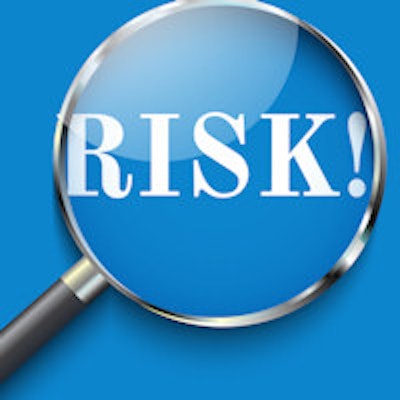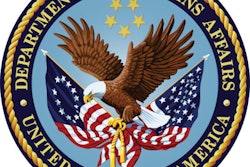
With the goal of ensuring overall safety and patient care in the MRI environment, a coalition of international MR organizations has published a blueprint to guide the creation of three safety positions within radiology departments or imaging centers.
The document, published online in the Journal of Magnetic Resonance Imaging, outlines the duties and requirements for an MR medical director/MR research director, MR safety officer, and MR safety expert. All three people would be trained on all aspects of operating an MRI suite, have advanced knowledge of the technology, and help oversee the coordination of patient scans.
"This is a long-needed document that finally provides some guidelines on how to set up an appropriate organizational structure to manage MR safety, with a clear distribution of roles and responsibilities," wrote co-author Fernando Calamante, PhD, from the Florey Institute of Neuroscience and Mental Health in Victoria, Australia, in an email to AuntMinne.com. "Importantly, this is a consensus document involving major MR-related organizations worldwide, and as such it provides strong support to the validity and practical efficacy of the recommended structure."
International input
The guidelines have been several years in the making, spurred in part by an increasing number of adverse MRI events in the U.S. over the past 12 years. Reported incidents rose from 40 recorded events in 2004 to 164 in 2012, according to the U.S. Food and Drug Administration's (FDA) Manufacturer and User Facility Device Experience (MAUDE) database.
The European Union (EU) also issued a directive on electromagnetic fields, which warned of exposure limits to electric and magnetic fields in the workplace. The EU essentially handed off the issue to the MRI community to develop its own regulations and effective training programs for workers in the field.
"Not only is this [document] a broad geographic representation, it is also a significantly broad representation of all parties for whom these standards are meant to apply," added MR safety advocate Tobias Gilk, senior vice president of Radiology-Planning and founder of Gilk Radiology Consultants. "It is the industry policing itself, saying, 'We recognize that we need to define the roles and responsibilities for protecting patient care and the institution itself with respect to MR safety risks.' "
Expected duties
The paper outlines myriad responsibilities for each position in detail and is applicable to both clinical and research MR settings (J Magn Reson Imaging, June 3, 2016).
The MR medical director/MR research director, for example, would oversee the safe execution of an MRI examination for each patient at all times. He or she might also preside over more than one MR scanner and be available to the MR operators or technologists at all times, along with a radiologist or physician.
The role of MR safety officer could be delegated to a radiographer, an MR technologist, or another trained individual who would be available at all times to ensure that proper policies and procedures are enforced on a daily basis. He or she will also ensure that MRI staff members are aware of safety and emergency procedures if an adverse event occurs, according to the authors.
The MR safety expert would likely be a physicist, but other qualified staff with technical MR expertise could handle the position, providing high-level advice on the engineering, scientific, and administrative aspects of the safe use of MR equipment. He or she would not necessarily have a medical background or expertise in the safety of prescription medications or other non-MR medical procedures.
Safety awareness
It's unclear to what degree imaging facilities and radiology departments are already familiar with MRI safety and are competent to maintain safety guidelines. Calamante said that it's difficult to judge that level of expertise because there are likely large variations in MR safety knowledge, organizational structure, safety procedures, and availability of resources in each facility.
"I would expect that many places already have an organization and structures that significantly overlap with what is recommended in this guidelines document," he said. "In any case, what this document provides is a framework to facilitate the right implementation of a suitable structure to manage MR safety; this should be helpful all the way from a radiology department in a small regional hospital to a major hospital in a capital city."
Once these roles and responsibilities have been clarified, Calamante said the next step is to develop and implement appropriate training programs.
That type of training is underway in the U.S. with the creation last year of the American Board of Magnetic Resonance Safety to craft and standardize testing and certification for MR safety competence. Dr. Emanuel Kanal, director of MR services at the University of Pittsburgh Medical Center, who co-founded the organization and serves as its chair, was a co-author of the current paper.
What's next?
"The big question in my mind is how this [document] gets translated to either licensure or accreditation standards," Gilk said, adding that he is interested to see if the Joint Commission, the American College of Radiology, and/or the U.S. Centers for Medicare and Medicaid Services spearheads that kind of initiative.
"It is a zero-cost, zero-burden proposition, and it does clarify the operational part of the structure to protect the patient and protect the MRI provider from potential accidents and liability," Gilk said.
In the end, Calamante hopes the guidelines will make a major contribution to MRI safety.
"Otherwise, all the effort to reach this consensus would have been wasted," he added. "Developing an appropriate set of roles and responsibilities to ensure MR safety has been a driving force to this project from the start."
Organizations contributing to the document included the following:
- European Federation of Organisations in Medical Physics (EFOMP)
- European Federation of Radiographer Societies (EFRS)
- European Society for Magnetic Resonance in Medicine and Biology (ESMRMB)
- European Society of Radiology (ESR)
- International Society for Magnetic Resonance in Medicine (ISMRM)
- Society for MR Radiographers & Technologists (SMRT)
- American Board of Magnetic Resonance Safety (ABMRS)
- Society for Cardiovascular Magnetic Resonance (SCMR)


.fFmgij6Hin.png?auto=compress%2Cformat&fit=crop&h=100&q=70&w=100)





.fFmgij6Hin.png?auto=compress%2Cformat&fit=crop&h=167&q=70&w=250)











